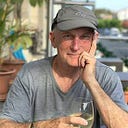Coastal stories…
A bush shack a part of our history
A humble bush shack was writing retreat for a prominent Australian author.
I SAT THERE AWHILE under the shade of one of the trees that dot the clearing and imagined her sitting on the verandah, writing. Did she write on a typewriter or by hand? Her isolation in this simple shack must have been just what an author needed. No electricity. Lighting by kerosene lantern.
I wondered whether this little shack in its bush clearing is now a shrine to the literati. Maybe it could be although I have never heard anyone claim that. Other countries have religious shrines. How appropriate were Australia to adopt the shack as a secular shrine to a woman who loved the bush and the local people and wrote about them.
On that fine, sunny and mild afternoon at the end of the winter of 2019 I was there for only a short time, a few minutes connecting in my imagination to a woman, an author and journalist, who found beauty on this coast and material to write about in the people who inhabited it.
A diverse life
Kylie Tennant had a diverse life as a journalist, novelist, publicity officer for the Australian Broadcasting Commission, union organiser, reviewer for the Sydney Morning Herald and as a publisher’s literary adviser and editor. It seems she lived life as an adventure.
According to her Wikipedia page:
“Her work was known for its well-researched, realistic, yet positive portrayals of the lives of the underprivileged in Australia. In a video interview filmed in 1986, three years before her death for the Australia Council’s Archival Film Series, Tennant told how she lived as the people she wrote about, travelling as an unemployed itinerant worker during the Depression years, living in Aboriginal communities and spending a short time in prison for research”.
A simple structure
Kylie met Ernie Metcalfe when she moved to the Laurieton area of the NSW Mid-North Coast during World War II. Ernie was a farmer who grazed cattle on nearby Diamond Head and who appears in Kylie’s novel, The Man on the Headland, as do localities in the area like Diamond Head and Crowdy Bay. Like Kylie’s hut they are now within the Crowdy Bay National Park.
Ernie built Kylie’s hut. It was restored in 1980. A track connects the clearing where the hut stands to the Kylies Beach. Another track, the short Metcalfes Walking Track, joins Kylies Beach with the Indian Head campground and is named after Ernie. In 1976 Kylie donated the hut and the surrounding land to the national park.
Made of local timber, Kylie’s hut is a one room structure with a fireplace and verandah. I noticed the gaps between the timbers of the walls when I walked in. It must have been draughty in there when the wind was coming off the sea or blowing winter cold from the south.
The windows, one at each end of the shack, have no glass panes. They are closed by wooden shutters. The verandah would surely have been a shaded and quiet place on those hot summer afternoons, a place to write, to think and to let the ambience of the surrounding bush soak in.
There is a galvanised iron water tank at the rear of the shack. Do I assume it replaced the original, if there was one? How else would Kylie have obtained water? A chimney of the same material projects above the iron roof.
An example of the Australian shack building tradition, Kylie’s is typical of many old huts of our coasts, bush and mountains.
You reach the shack along a short track from Kylie’s campsite, which is suitable for car camping. If you carry your tent, food and water to the clearing the shack stands in, you can camp there but not in the shack, which serves as a day shelter.
Sitting there that day evoked imaginings of how Kylie would have experienced this place. I imagined her waking in the morning to the calls and tweets of birds as they welcomed the start of another day, the raucous cackle of kookaburras sounding through the bush. I could see her lighting the fire on cold winter nights and sitting out the hottest part of late-summer days on the verandah. The clank as she put the lid on the kettle and placed it over the fire for a morning cup of tea. Were these the everyday activities that made up her life?
The sun was low in the sky and was painting the treetops with the golden light of late afternoon as I stood and walked out of the clearing. Stopping where the track starts to the car camping area I glanced back at the little hut, its timbers greyed by the decades, and thought that maybe this is a shrine of sorts, not only to a writer but to a place in the bush on the coast, locations so evocative for Kylie Tennant, locations so iconic in our culture.
More By Road & Track
Byron backroads
Coastal dreams — remembering local surfing history
Most of all, it’s the people we remember
Small boat, big seas — the Voyage of the Cormorant
By Road & Track on facebook:
https://www.facebook.com/BY-ROAD-TRACK-278399913047813/?modal=admin_todo_tour
